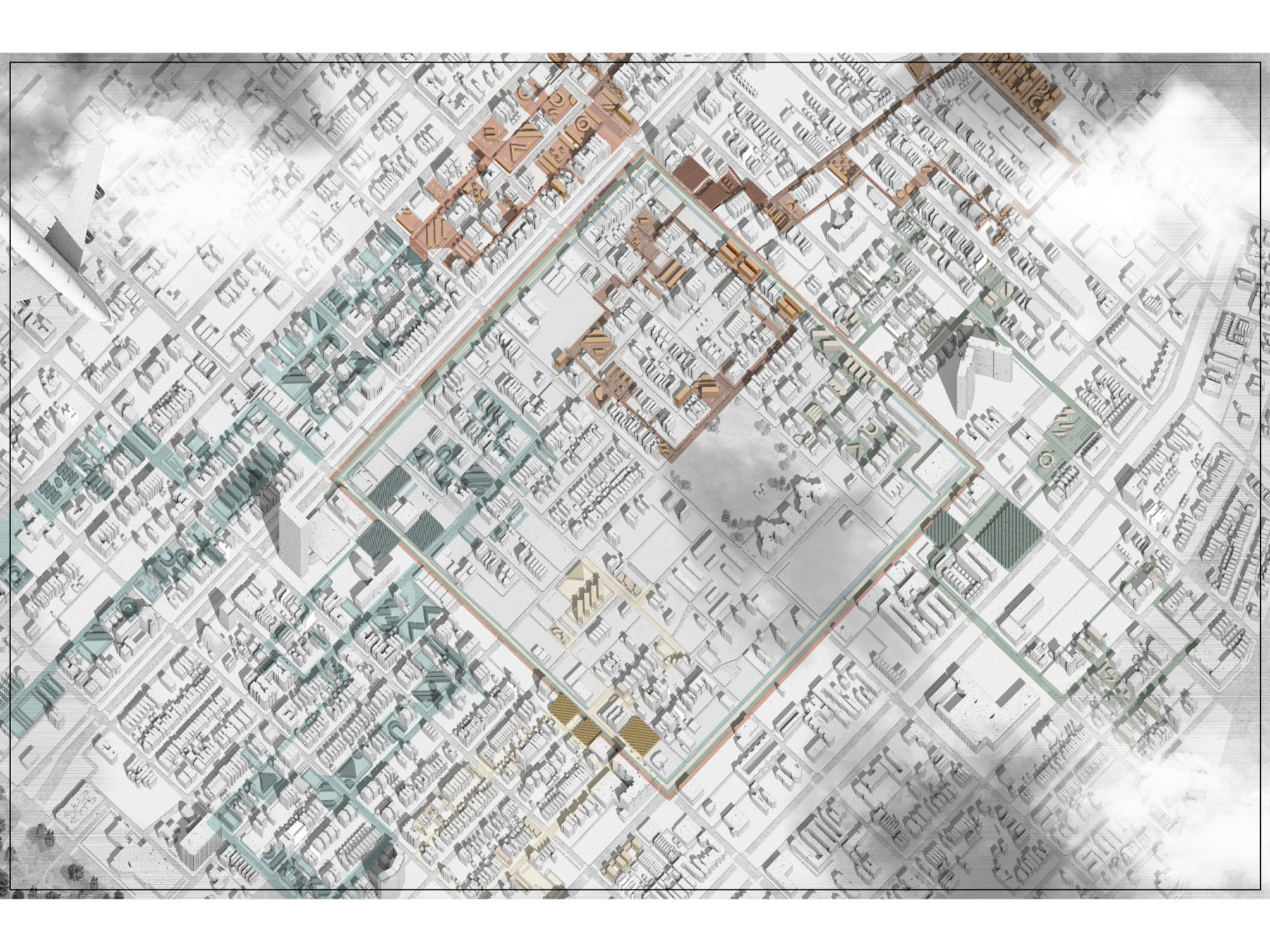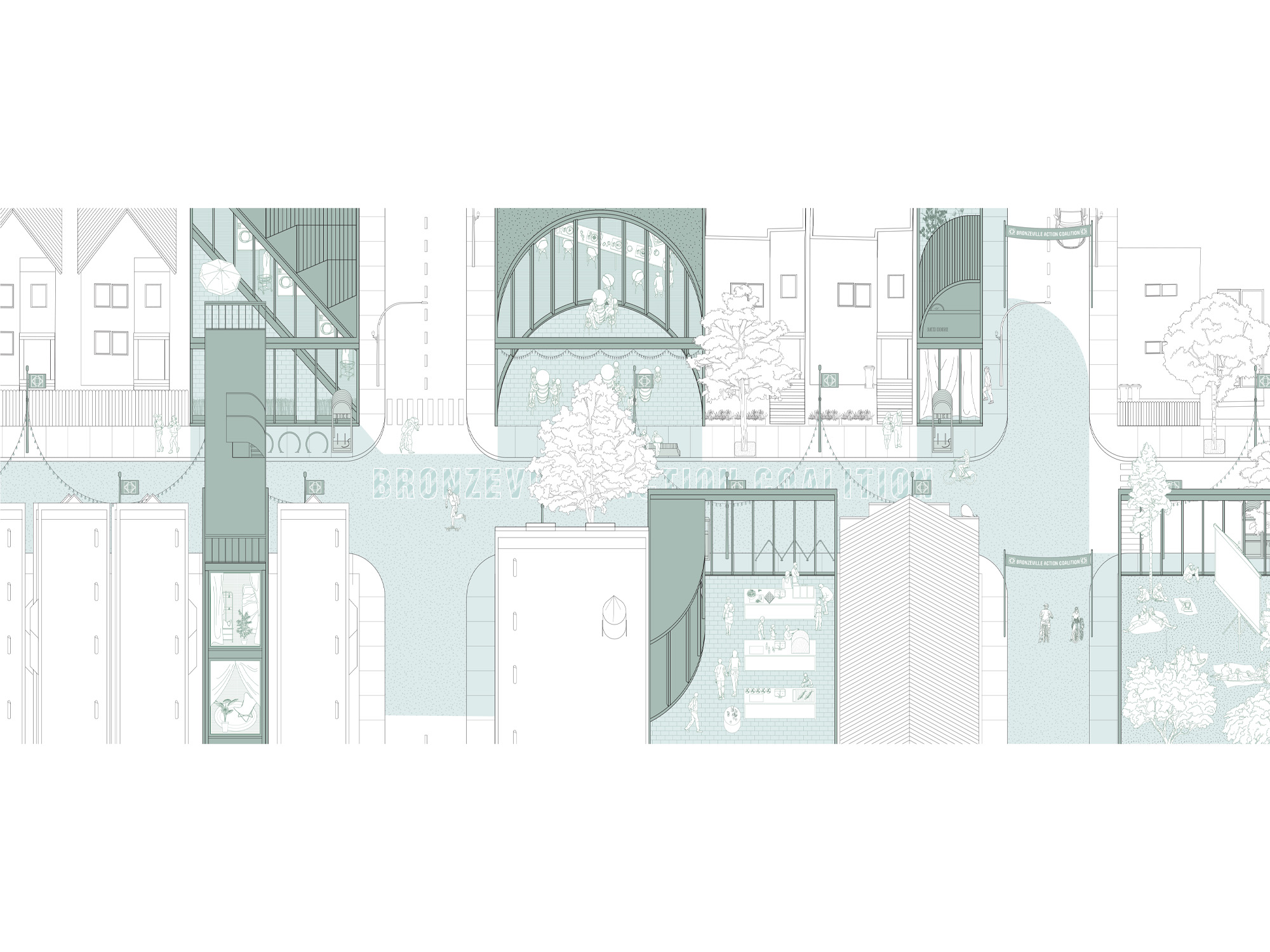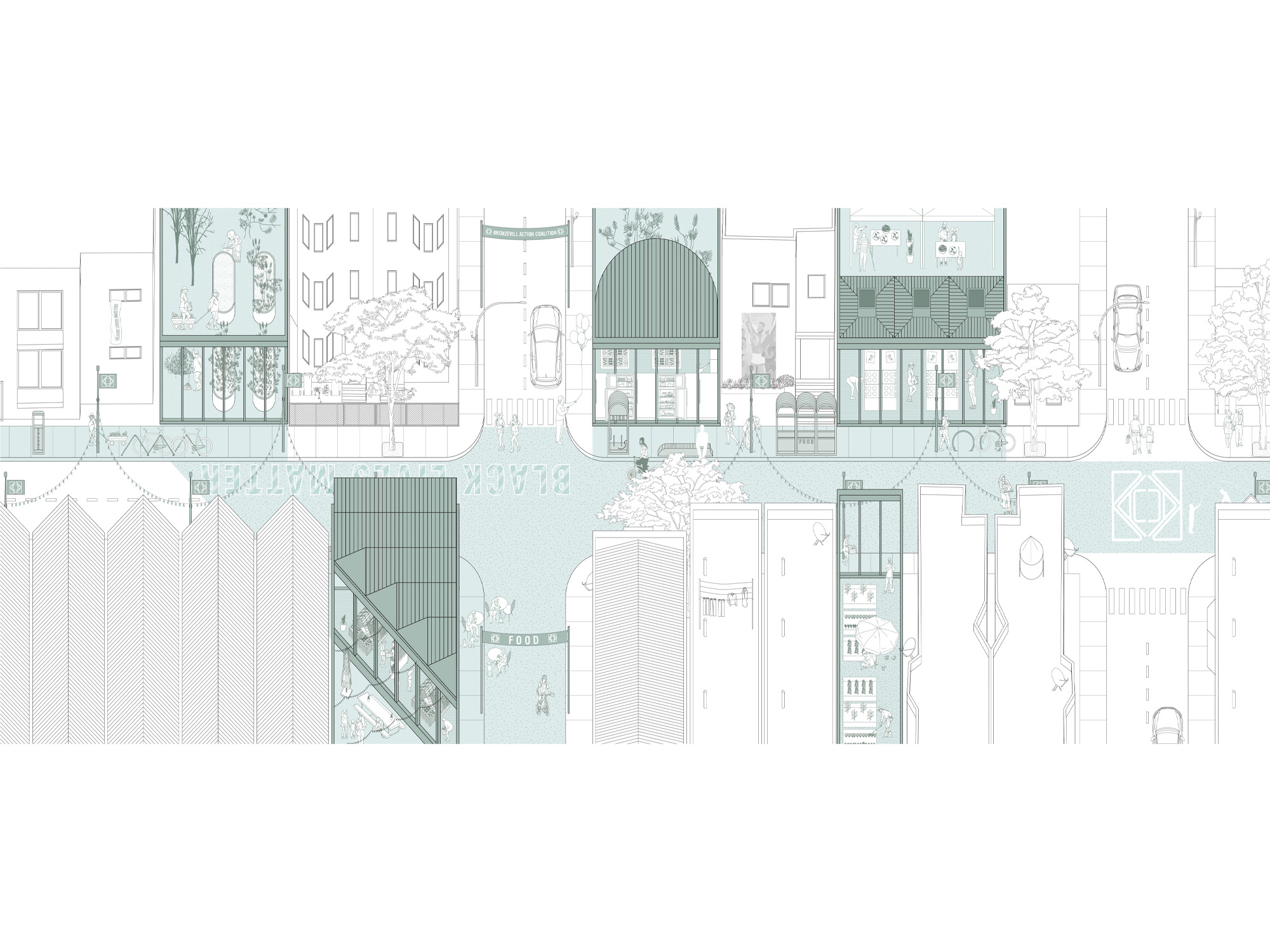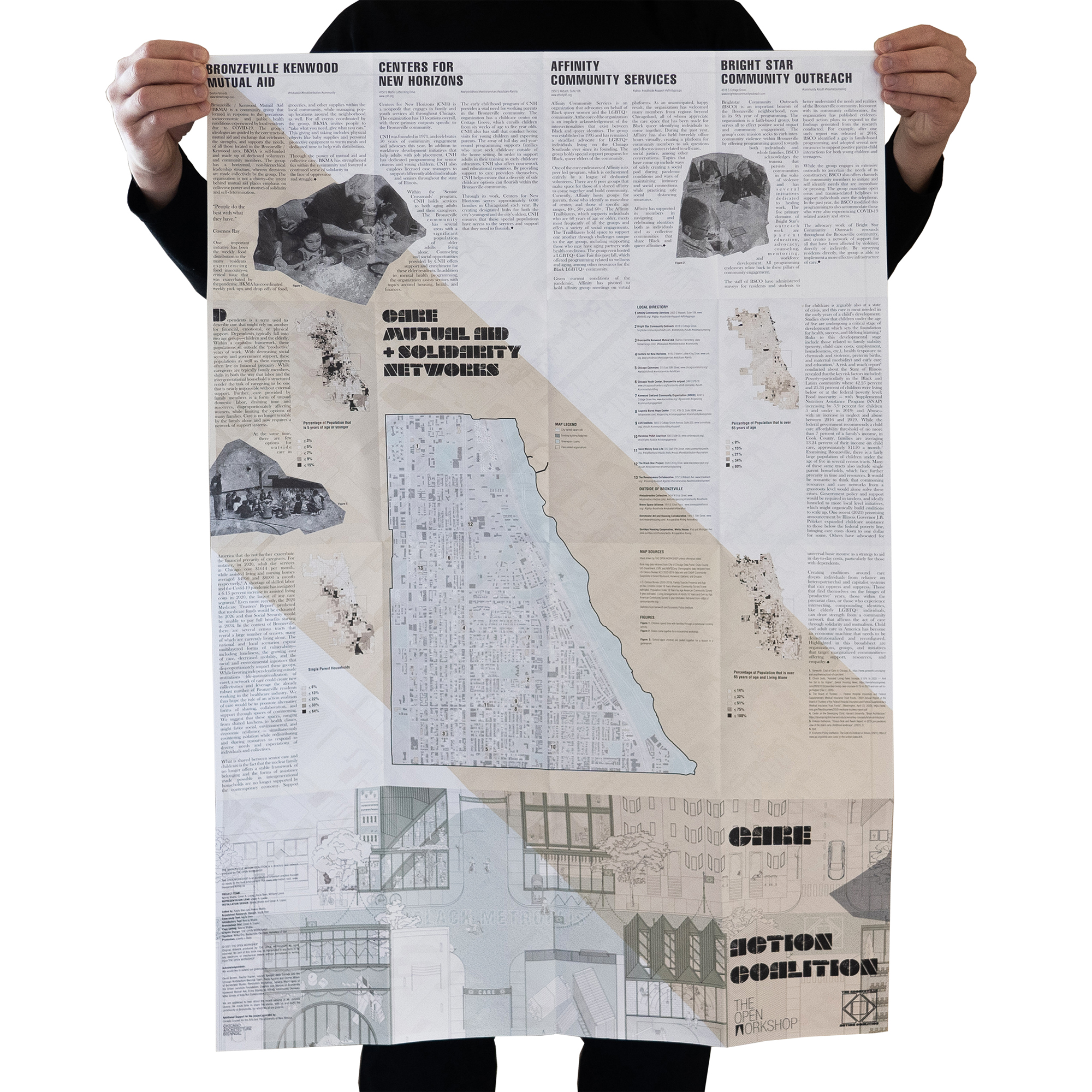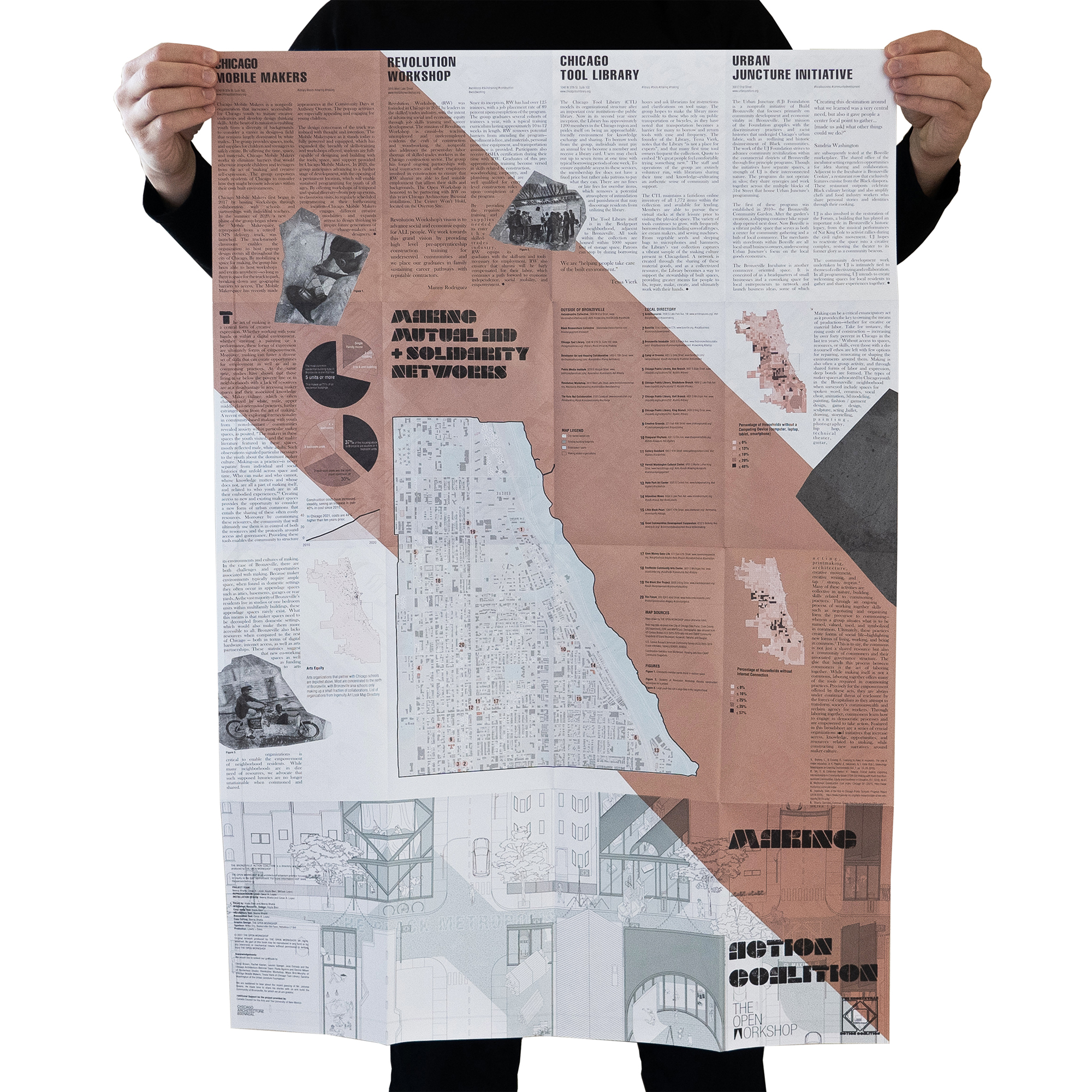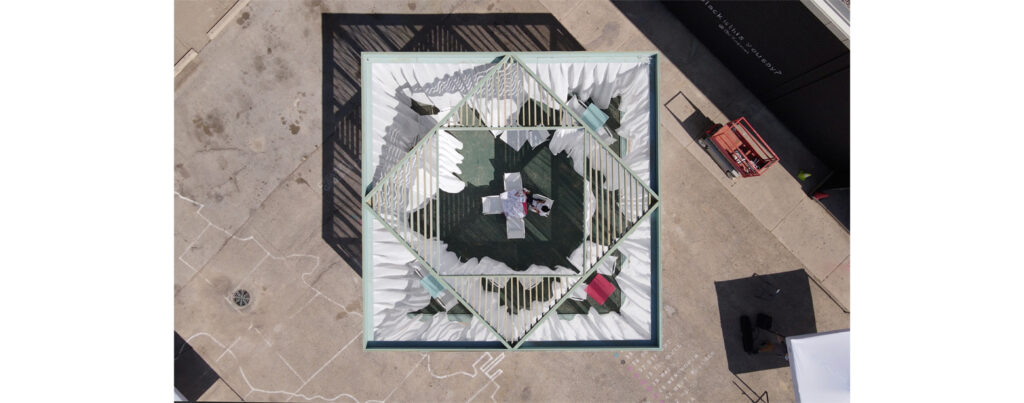The numerous vacant lots in Chicago represent urban inequity that is propelled by—and a symptom of— property ownership. As more residents are living in precarity, the urban commons, wherein a shared resource is collectively managed and governed, have taken on a new importance. By sharing resources, residents can have access to more resources without economic burden. While domestic commons (or communes) have historically offered meaningful forms of agency to residents, they have struggled to become a widespread model for living. This is not surprising, as communes rely on an intimate scale of decision making which is eased through having a more homogeneous group of residents. This design-research project addresses these issues by decentering the commune into an urban commons that could occupy vacant publicly-owned lots in Bronzeville. This entails separating the programs of the traditional co-living house into a range of structures and spaces that are locally tailored to individual sites. As a network of buildings, additional scales of sharing resources are generated amongst residents and the neighborhood. The design challenges the enclave nature of communes to encourage full integration with the neighborhood.
The forms of solidarity that communes and the commons promote already exist in Bronzeville through a range of inspiring organizations and initiatives focused on mutual aid, resource sharing, and skill building. This design intervention speculates on how these various initiatives can assemble a network of sharing that leverages the numerous vacant lots in Bronzeville. The speculative network focuses on four key resources—food, making, ecology, and care—that would be tied to an associated hub building to give more local control to residents in crafting their own ways of life.
The number of community organizations currently at work in Bronzeville is a testament to the foundation laid by the various counter-cultural movements in Chicago since the 1960s. In addition to this robust activity, community organizations constantly seek ways to raise their visibility to those who need it the most. This project proposes a coalition that intersects these numerous organizations and grassroots initiatives into a network of mutual aid and care by finding synergies between resources and creating greater conversations. The Bronzesheet is a series of large-format prints that follows this intent by consolidating the resources on the ground into a directory format to catalyze new forms of solidarity as a coalition by highlighting their impacts and missions. They are categorized by the same themes that organize the design project’s spatial network—food, making, ecology, and care.
The inspiration for the Bronzesheet drew from The original Rainbow Coalition, which intersected organizations such as The Black Panther Party, the Young Patriots Organization, the Young Lords into a multicultural movement towards the common goal of social and economic empowerment. Despite nuances in ideologies and approaches, they cemented solidarity through joint action against poverty, corruption, racism, and substandard housing, leading to demonstrations that brought greater awareness of common causes. This model of activism led to successor programs later offered by the Intercommunal Survival Committee (ISC), which built upon the Black Panther’s work by providing access to affordable foods and healthcare for residents of Chicago. The Bronzesheet is reminiscent of the newsletters and magazines circulated by the original Rainbow Coalition and the ISC, which relied on print media for building advocacy and knowledge. Using the printed broadsheet as the primary form of disseminating this project’s research and design components, The Bronzesheet leverages print media as an accessible medium to form a conversation that is free of the corporate interests residing in social media platforms.
The Bronzesheets, once unfolded, can be read in multiple states. While a different theme grounds each sheet, the design interventions that bind them in the design project also ties them together through two drawings. On the front side of each sheet is a line drawing that spans across and connects them, revealing the potential interactions, exchanges, and solidarity on the vacant sites when new forms of value are presented. The line drawing borrows elements found in zines, a key component of a counter-culture movement’s rise and continued prevalence—framing narratives that fall out of line with conventional society. This counter-cultural ethos made the zine a mission-aligned representation that communicated the new subjects and resources activating these networks. On the backside of each Bronzesheet is an axonometric drawing belonging to a larger portrait that provides a complete overview of the spatial network of the vacant sites and resources. Each tile shares a glimpse of areas related to all four themes, speaking to the dialogue amongst these resources. The Bronzesheet frames initiatives on the ground to bring legibility to actions in the community that often remain hidden—intersecting design and research components into a resource that can start new conversations to move representation into action.
